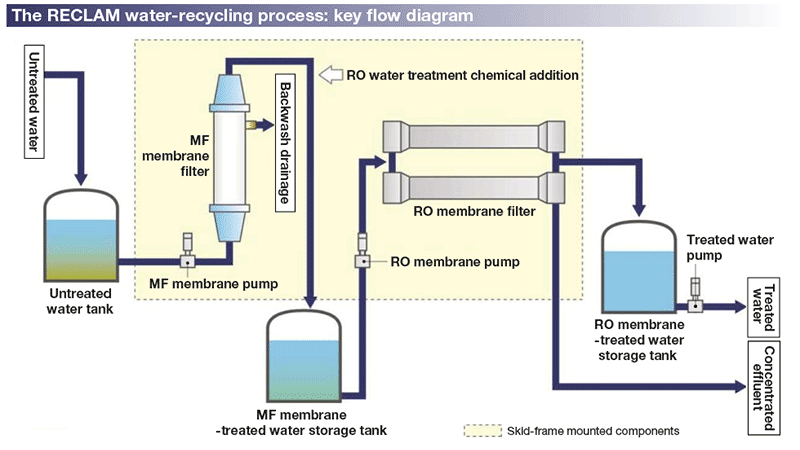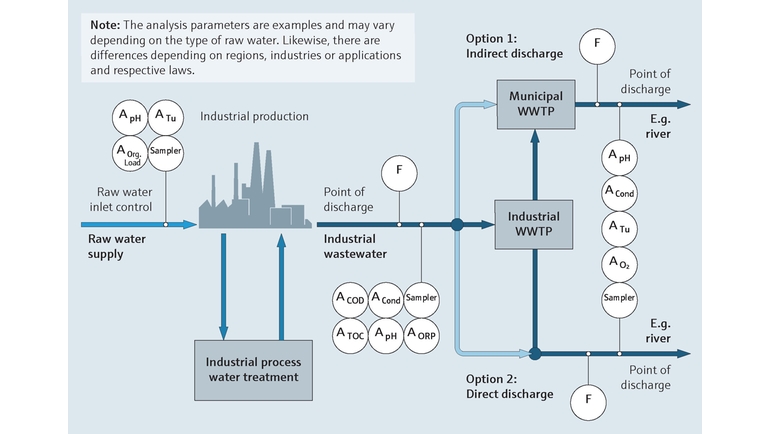Industrial Waste Water Treatment-- Eco-Friendly Solutions for Water Recycling
Wiki Article
Innovations and Breakthroughs in Hazardous Waste Water Therapy Technologies
The landscape of industrial wastewater therapy is going through a transformative shift, driven by technologies that improve both performance and sustainability. As governing standards develop, the combination of AI and equipment learning into wastewater monitoring systems promises to make sure and improve operations conformity.Introduction of Drainage Therapy Technologies
Wastewater therapy innovations include a series of approaches created to eliminate pollutants from industrial effluents prior to their release right into the setting. These innovations are essential for keeping ecological equilibrium and guaranteeing conformity with ecological regulations. The main categories of wastewater therapy include physical, chemical, and biological techniques, each serving unique objectives based upon the nature of the impurities existing.

Biological treatment methods utilize microorganisms to break down raw material, making them particularly efficient for organic-rich effluents. Techniques like activated sludge and biofilm reactors harness the natural degradation abilities of bacteria, bring about considerable decreases in biochemical oxygen demand (BODY)
Advanced Filtration Strategies
Advanced filtering methods stand for an important evolution in the realm of commercial wastewater therapy, enhancing the performance of contaminant removal processes. Industrial Waste Water Treatment. These methods incorporate a variety of technologies, including microfiltration, ultrafiltration, nanofiltration, and reverse osmosis, which offer sequential obstacles for numerous fragment sizes and chemical frameworksMicrofiltration and ultrafiltration make use of membrane layer systems to eliminate suspended solids, germs, and larger natural molecules, improving the top quality of effluent before additional treatment. Nanofiltration connects the space between ultrafiltration and reverse osmosis, properly eliminating organic compounds and divalent ions, therefore lowering the lots on downstream procedures.
Reverse osmosis supplies the highest level of purification by enabling only water and little particles to pass through its semi-permeable membranes, making it suitable for reclaiming high-quality water from commercial effluents. Current innovations in membrane layer modern technology, consisting of the advancement of even more long lasting and fouling-resistant products, have considerably boosted operational performance and reduced prices.
Including these innovative filtering methods not only improves the overall treatment procedure however likewise adds to sustainability initiatives by making it possible for water reuse and resource recuperation in industrial settings. (Industrial Waste Water Treatment)
Organic Therapy Technologies

In addition, the growth of crafted organic systems, such as membrane bioreactors (MBRs), integrates organic treatment with sophisticated membrane purification. This assimilation enables greater effluent quality and minimized impact, making it appropriate for space-constrained industrial facilities. Technologies in genetically engineered microorganisms have actually also arised, boosting the biodegradation of specific contaminants, such as pharmaceuticals and heavy metals, that are traditionally challenging to eliminate.
Additionally, the execution of bioaugmentation methods, where advantageous microbes are introduced to enhance the existing biological treatment procedures, has actually revealed encouraging cause boosting treatment performance. These advancements jointly represent a fad in the direction of even more lasting and efficient biological treatment methodologies that can adjust to the developing intricacies of commercial wastewater streams. As industries continue to focus on environmental conformity, these organic advancements will play a crucial role in wastewater management.

Resource Recuperation Approaches
In commercial settings, the integration of resource recovery techniques has actually become significantly essential for enhancing sustainability and decreasing waste. These approaches focus on removing valuable materials and power reference from wastewater streams, therefore transforming possible toxins right into reusable sources.One famous method is nutrient healing, where nitrogen and phosphorus, frequently present over in wastewater, are caught and exchanged plant foods. This not only decreases ecological influences yet also provides a circular economic climate solution for agricultural applications. Additionally, modern technologies such as anaerobic food digestion permit the conversion of organic waste into biogas, a sustainable energy resource that can balance out nonrenewable fuel source use in commercial operations.
Moreover, progressed filtering and membrane layer modern technologies facilitate the recovery of commercial spin-offs such as steels and salts. These recovered materials can be reintegrated right into production procedures, reducing the demand for virgin resources.
Future Fads in Drainage Administration
As markets significantly focus on sustainability, the future of wastewater monitoring webpage is established to undertake substantial improvements. Technological advancements, such as artificial knowledge and device knowing, will make it possible for more reliable tracking and administration of wastewater systems. These modern technologies can predict upkeep requirements, optimize therapy processes, and boost decision-making, eventually lowering functional expenses and ecological impact.Additionally, the combination of circular economic situation principles will certainly play a vital duty in wastewater monitoring. Industries are expected to move in the direction of systems that not just treat wastewater yet likewise recover important sources, such as nutrients, water, and energy. This transition will lessen waste and advertise the reuse of materials, aligning with international sustainability goals.
Arising treatment methods, such as membrane layer bioreactors and advanced oxidation processes, will certainly additionally boost the efficiency of wastewater therapy, enabling better effluents ideal for reuse. In addition, governing structures are most likely to progress, stressing stricter requirements for wastewater discharge and motivating sectors to take on cutting-edge treatment solutions.
Conclusion
To conclude, the evolution of industrial wastewater therapy innovations demonstrates a considerable shift towards enhanced efficiency and sustainability. Technologies in innovative filtering techniques, organic treatments, and source healing approaches highlight the market's dedication to ecological stewardship. The assimilation of artificial knowledge and equipment discovering even more maximizes these processes, guaranteeing regulatory conformity and advertising a round economic climate. Continued innovations in these locations will play an essential function in shaping visit site the future of wastewater management and protecting vital water resources.The landscape of commercial wastewater treatment is undergoing a transformative shift, driven by developments that improve both performance and sustainability.Wastewater therapy modern technologies incorporate a variety of methods created to remove pollutants from commercial effluents before their release into the environment.Harnessing the power of biological processes has led to significant innovations in the therapy of industrial wastewater.In addition, the application of bioaugmentation methods, where beneficial germs are introduced to boost the existing organic treatment procedures, has actually shown encouraging outcomes in boosting treatment performance. These developments collectively represent a pattern towards more effective and lasting organic treatment approaches that can adapt to the advancing intricacies of industrial wastewater streams.
Report this wiki page